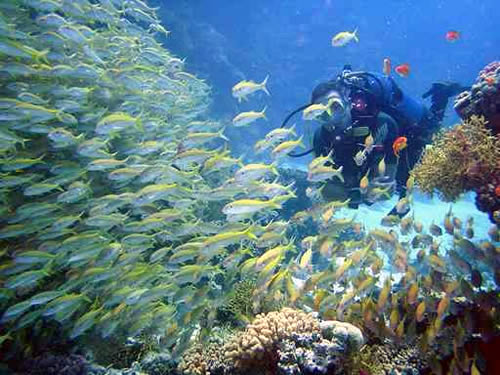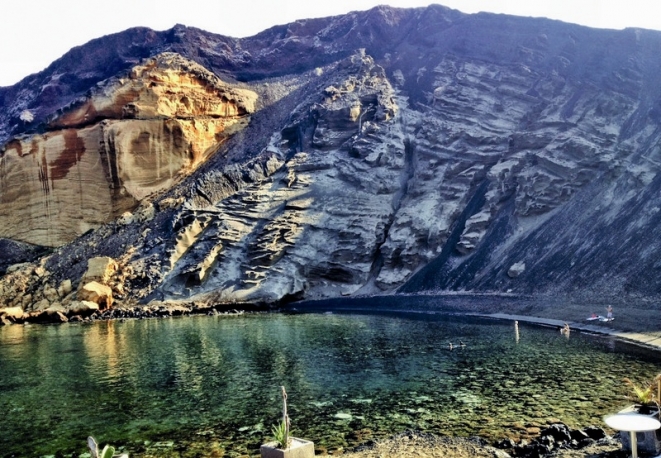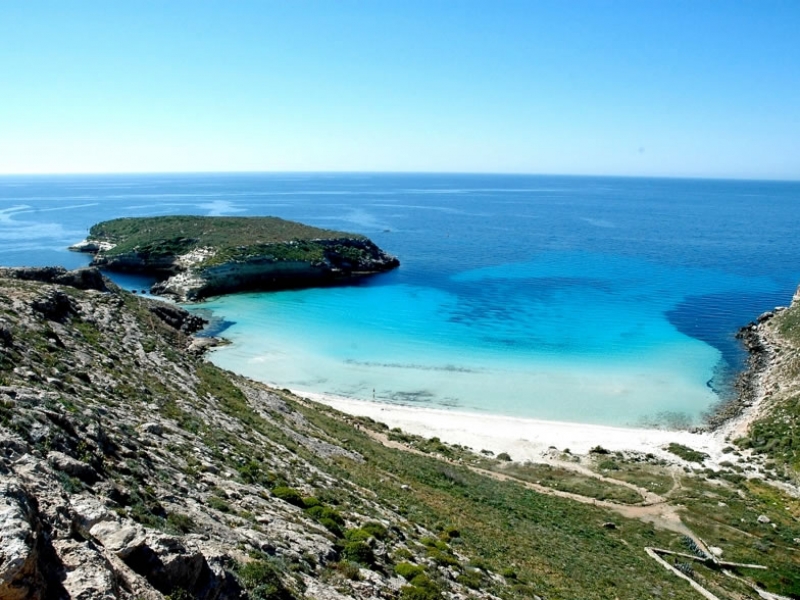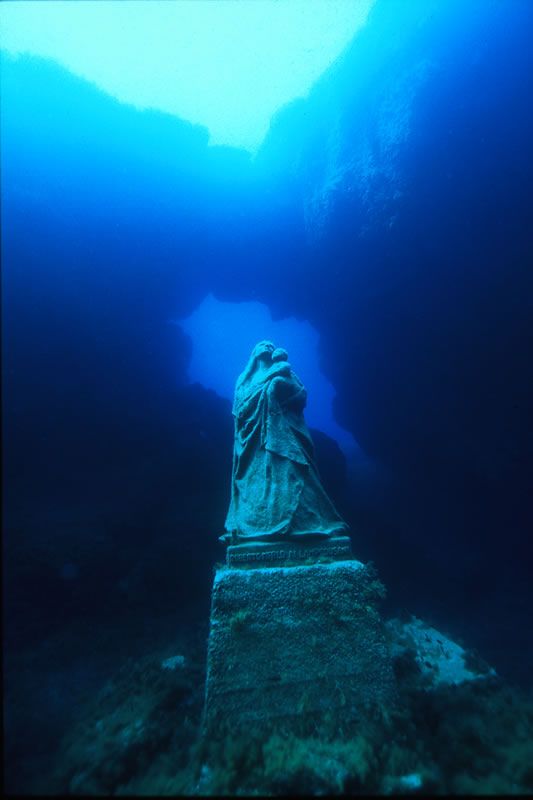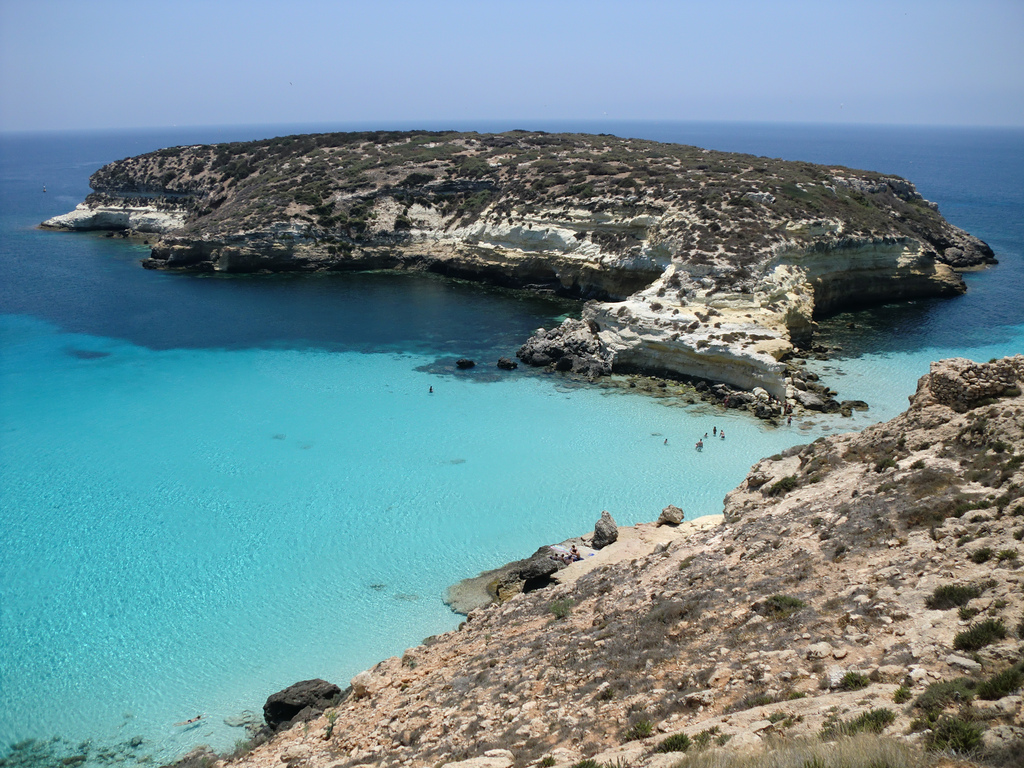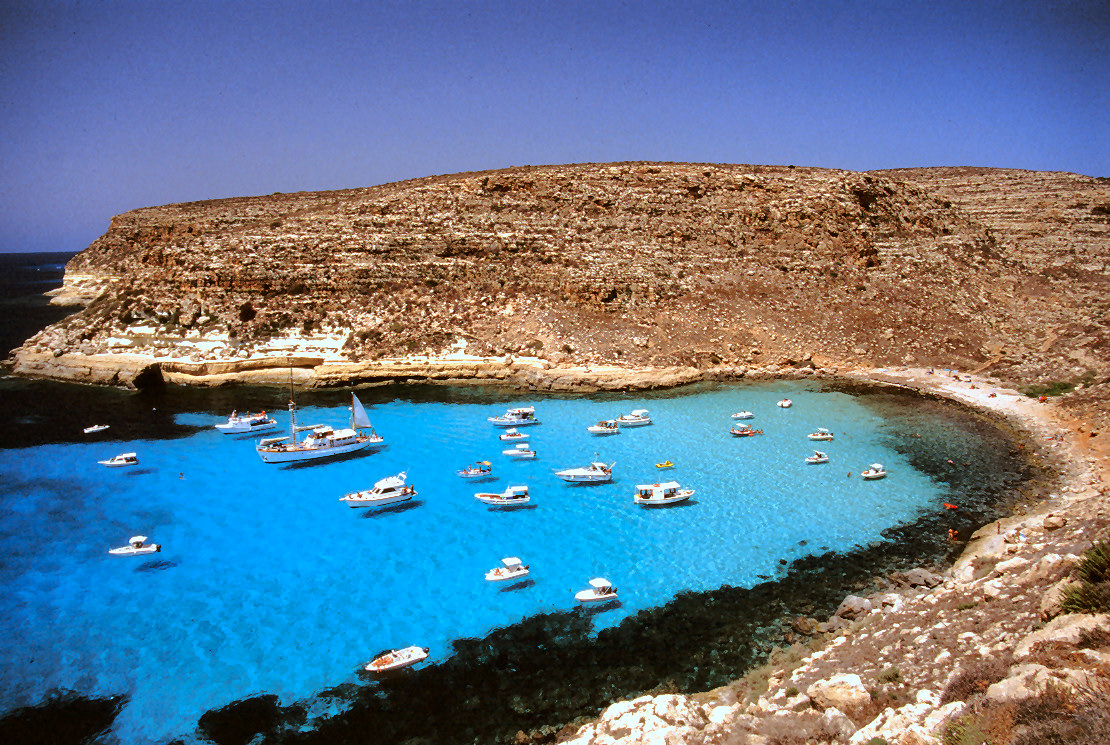
Pelagie Islands
This post is also available in:
 Italiano (Italian)
Italiano (Italian)
The Pelagie Islands, Lampedusa, Linosa and Lampione, are located In the Mediterranean Sea, between Sicily and Africa. Since 2002, they have been acknowledged as a Marine Protected Area. The islands cover a total 10.220 acres, with 26.5 miles of coastline.
In the past, the archipelago was inhabited by Arabs and Lampedusa used to be ruled by one of their governors. In 1839, the Bourbons began its colonization, which led to a dramatic transformation of the territory: deprived of the luxuriant vegetation of the Mediterranean scrub, a process of desertification eventually began.
The three islands, white Lampedusa, black Linosa, and very small Lampione, are influenced by the currents of the Ionian and Aegean seas. They have different environmental features, also when it comes to the underwater habitats, due to their different origins: Lampedusa and Lampione belong to the African continent, while Linosa to the European one.
The Protected Area features a very rich natural heritage and is mainly focused on the protection of cetaceans, sea turtles and cartilaginous fish.
SUBMARINE FLORA AND FAUNA
The underwater panorama consists of a seagrass prairie made of Posidonia oceanica; there are also several other algae, such as Cystoseira amentacea, and encrustations of calcareous algae (Lithothamnium spp.).
Among the cetaceans, the Tursiops truncatus dolphin lives in the waters near the coasts, while other species, such as Delphinus Delphis, Stenella coeruleoalba, and Balaenoptera physalus, prefer the surrounding waters.
Sea turtles (Caretta caretta), currently threatened of extinction, prefer the beach of “Isola dei Conigli” (“Rabbit Island”) and Pozzolana di Ponente, in Linosa. In the depths of Lampione, thrive groupers, lobsters, yellow and pink coral and grey sharks.
Lampedusa Island Oriented Nature Reserve
Established in 1995, this reserve is located in a special protection area (SPA) and a site of Community importance, between Vallone dell’Acqua, to the west, and Cala Greca, to the east: it also includes Isola dei Conigli (“Rabbit Island”).
FLORA
Following the destruction of the original, thick and variegated Mediterranean scrub during the Bourbon colonization, the island retains a great floristic richness, with species which are not found anywhere else in Italy, such as caralluma (Caralluma europaea), a succulent species of Maghreb origin, Stapelia europea, a species of African origin, bachelor button (Centaurea acaulis), endemic to North Africa, the wild carrot of Lampedusa (Daucus lopadusanus), and chamomile (Anthemis lopadusana).
The landscape is dominated by a low, soft-leaved scrubland, with euphorbia, mastic, thyme, and wall germander (Teucrium chamaedrys), which is replaced by the Mediterranean steppe, with endemic Allium lopadusanum), species belonging to the Asteraceae family (Pallenis spinosa, Carlina sicula), and sea squill (Drimia maritima).
In the coastal environments, there are Euphorbia pinea, Thymelaea irsuta, Sedum sediforme, Sedum dasyphyllum, Capparis spinosa , and Atriplex halimus.
The ancient Mediterranean scrub survives only in some internal valleys of the reserve, rich in tree spurge (Euphorbia dendroides), with sparse settlements of Phoenician juniper, carob and some olive trees. In one particular area, the Forestry Corps of the Sicilian Region has carried out a reforestation project with Aleppo pines (Pinus halepensis)
FAUNA
Like the flora, also the local fauna resembles the North African one. Among mammals, in Lampedusa there are wild rabbits, mice, black rats and Etruscan shrews; then, there are bent-wing bats (Miniopterus schreibersi), and greater mouse-eared bats (Myotis myotis). Reptile species include Moorish geckos (Tarentola mauritanica), ocellated skinks (Chalcides ocellatus), and Algerian sand racers (Psammodromus algirus); the latter live exclusively on Isola dei Conigli, the only Italian colony of these lizards.
Again, only on the island of Lampedusa, there is the only recorded presence of false smooth snakes (Macroprotodon cucullatus) in Italy, and several Montpellier snakes (Malpolon monspessulanus insignitus).
Many sea turtles (Caretta caretta) regularly nest on the beach of Isola dei Conigli.
The only amphibian present is the African green toad (Bufo siculus).
Several bird species nest there, including seagulls, kestrels, Eleonore’s falcons, peregrine falcons, European shags, Scopoli’s shearwaters and manx shearwater; there are many migratory species, including turtle doves, European pied flycatchers, meadow pipits, garden warblers, bee-eaters, jays, moorhens, black-crowned night herons, and many others.
Among the insects, many species offer plenty of evidence about the affinities between the fauna in Lampedusa and that of North Africa, such as the endemic Pamphagus ortolaniae, a large wingless grasshopper, and the Julodis onopordi lampedusanus, a beetle with a rainbow livery, as well as many species that live only on this Sicilian island, such as the Odontura brei, and the Coccinella algerica, Campalita algerica and Exochomus nigripennis beetles.
Local treats:
Bluefish in olive oil from Lampedusa and Sicilian “cassata” (a traditional sweet from Sicily).
Linosa Island and Lampione Nature Reserve
This Reserve, managed by the Forest Company of the Sicilian Region, is part of the Pelagie Islands Marine Protected Area, along with its coastal stretches and those of Lampedusa.
Known for its beautiful waters and suggestive cliffs, Linosa is a volcanic island native to the European continent: therefore, it hosts a peculiar flora completely different from that of the other islands of the Mediterranean, including Lampedusa: it features, in fact, 220 different plant species, as well as moss and lichens.
In addition to the typical species of the Mediterranean scrub (Pistacia lentiscus, Euphorbia dendroides, Capparis spinosa, Thymus capitatus), it includes several exclusive endemisms, such as Valantia calva, Valantia muralis var. intricata, Limonium algusae, Pancratium angustifolium, Erodium neuradiflorum var. linosae, Galium mural var. calvescens, and endemic species which can also be found on nearby islands, such as Linaria pseudolaxiflora (also growing in Malta), Oglifa lojaconoi (abundant also in Pantelleria), and Plantago afra ssp. zwierleinii (also observed in Lampedusa, Pantelleria, and Malta).
Pozzolana Beach in Linosa is one of the last Italian nesting sites for Caretta caretta sea turtles, and a Site of Community Importance (SIC) for the EU.
Scopoli’s shearwaters (Calonectris diomedea), procellariform birds that live almost all year in the open sea, usually nest there. Among reptiles, there are Maltese wall lizards (Podarcis filfolensis laurentimulleri), and the Calcides diomedea variety of the eyed skink.
Lampione, on the other hand, is just a limestone rock: hostile and difficult to reach, it retains a pristine environment, with rich wildlife protected by the Nature Reserve: there are nesting colonies of sea birds such Eleonora’s falcons, geographically isolated populations of Podarcis Filfodensis, and several ocellated skinks (Chalcides ocellatus).
White sharks and other pelagic shark species reproduce in these waters.
This post is also available in:
 Italiano (Italian)
Italiano (Italian)
Contatti
Via Cameroni 92 - Lampedusa e Linosa(AG)
0922 975780
info@isole-pelagie.it
Altre info
Gratuito
